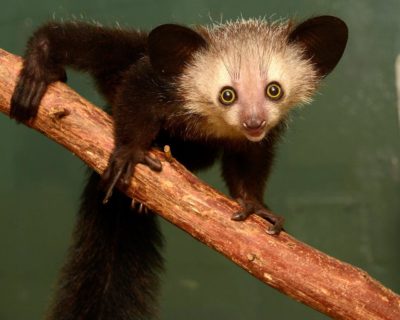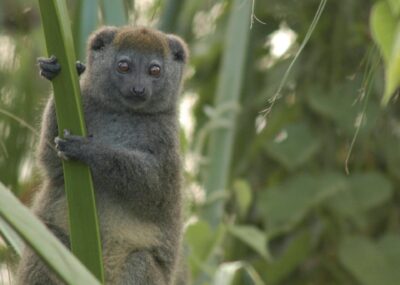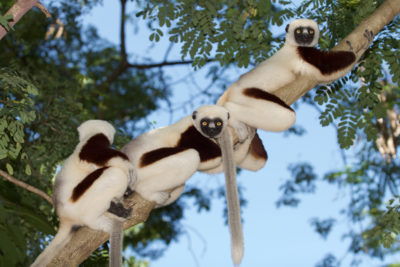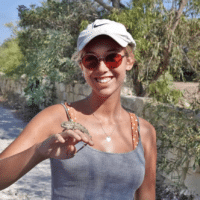
We interview Ellie Dobbs, a Masters student in Conservation Biology at the University of Kent. Her research studies the variations in perceptions and taboos about aye-ayes in Madagascar.
Her undergraduate dissertation is titled “The Aye-Aye Enigma: Analysing the variation in attitudes, beliefs, and customary institutions pertaining to the aye-aye (Daubentonia madagascariensis)”. She aimed to deduce existing patterns in attitudes and highlight drivers for these attitudes and perceptions.
What is your background, and how did you find yourself studying the lemurs of Madagascar?
I always knew I wanted to do a degree in conservation, ecology or zoology. I consider myself one of the few lucky fresh-faced 18-year-olds joining university who knew exactly what they wanted to do with their life. Throughout university, I gained new passions for different taxa including sea turtles, snakes, and tropical rainforest species, as well as a greater appreciation for ethnozoology and anthropology. Whilst on my placement year in Malta, I became interested in the island’s taxa and the local people’s relationships with the wildlife, particularly the negative perceptions towards snakes.
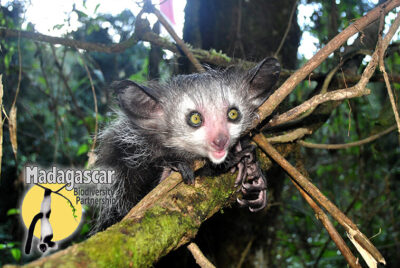
Upon discussing these ideas with my supervisor Dr. Charlie Gardner (University lecturer at the University of Kent) and recognising my interest in ethnozoology, he suggested looking into the aye-aye and how the Malagasy people view the species.
From then on, I was absolutely fascinated by this quirky and evolutionary distinct species [the aye-aye], and shocked to see it had received relatively little scientific interest in terms of its persecution. I assumed this was largely attributed to its elusive nature, assumed rarity, and focus on ecological, behavioural, and genetic research.
Generally speaking, your research is on Aye-Ayes and fady. What is a fady?
Within the context of Malagasy culture, they are complicated concepts. The term fady can be somewhat translated into our western idea of the term taboo.
However, unlike how seeing black cats, breaking mirrors, or speaking ill of the dead are considered taboo in some western cultures, individuals face no true or direct ‘punishment’ for doing these taboos. Most people rationalise them as trivial.
This is not true of Malagasy culture. The transgression of ‘taboos’ such as eating certain animals, visiting certain places, etc., results in spiritual and/or some form of ancestral retribution or punishment based on the type of fady.
The aye-aye fady is even more complicated. It isn’t entirely correct to simply state that the aye-aye is fady itself. Instead, there are fundamental fadys such as the aye-aye being fady to eat, to harm, or to kill. These fundamental fadys do not vary much, but the reason that these fadys exist and how they translate to attitudes and perceptions towards the species does vary.
What exactly are you researching, and what have you found?
My specific research title was, “The Aye-Aye Enigma: Analysing the variation in attitudes, beliefs, and customary institutions pertaining to the aye-aye (Daubentonia madagascariensis)”.
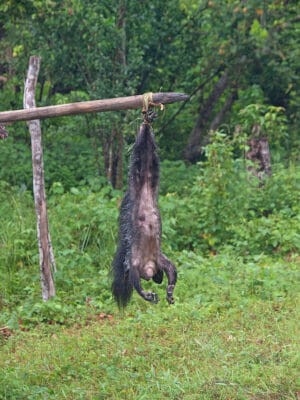
My research aimed to map out the varying levels of perception towards aye-ayes and deduce any patterns across space and/or ethnicity.
My initial findings highlighted that perceptions, attitudes, and stories did not fall easily into strict categories such as positive and negative. So, I created more descriptive categories based on how these impacted the aye-aye itself. For example, ‘negative’ was separated into ‘negative (killed)’, ‘negative (not killed)’, ‘negative (eaten)’, and ‘negative (unknown)’. I also included ‘Positive’, ‘neutral’, ‘neutral (eaten)’, and ‘ambiguous’.
This led to the conclusion that negative perceptions do not inherently result in negative consequences or negative impacts for the aye-aye itself!
Additionally, I collected folklore reports. From these I found that the aye-ayes’ range MIGHT extend further beyond current estimates, especially in the Diana and Sofia regions! Further research is needed to confirm this.
My hope is that my research can aid conservationists and policy makers to tailor conservation management strategies to specific areas based on existing aye-aye perceptions in a given area.
What are the next steps for this research?
I am currently writing up my dissertation research for publication, with support from my supervisor! Once I have completed my masters and gained experience in the conservation field, I hope to start a PhD in aye-aye-human dynamics. This would allow me to conduct more in depth research and explore further interesting points. And, I hope this will also give me the opportunity to visit Madagascar and see an aye-aye for myself in the wild!
What are you working on now?
I am currently undertaking a master’s at the University of Kent in Conservation Biology! I hope that this programme will help me gain greater skills in research methodology, increase my knowledge of how to protect the natural world, and prepare me for a career in conservation.
After my master’s, I am hoping to spend time travelling. I would love the opportunity to see some of the incredible things the natural world has to offer and maybe find places I may want to conduct research in the future, like Costa Rica, Australia, or South Africa. This will give me a much-needed break from academia before I embark on a PhD!
Lastly, what is your favourite lemur species and why?
Obviously, I am biased and have to say the aye-aye! However, I am also a big fan of the bamboo lemurs. And, having studied primate communication in my undergrad, I think the visual and olfactory communication between sifakas through chest staining is also super fascinating!

